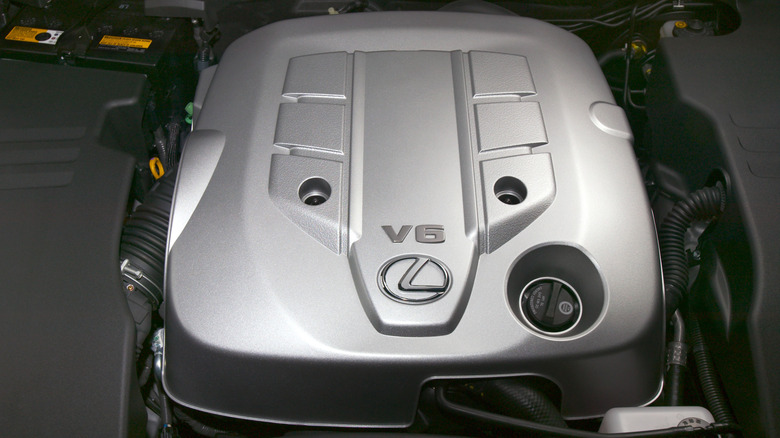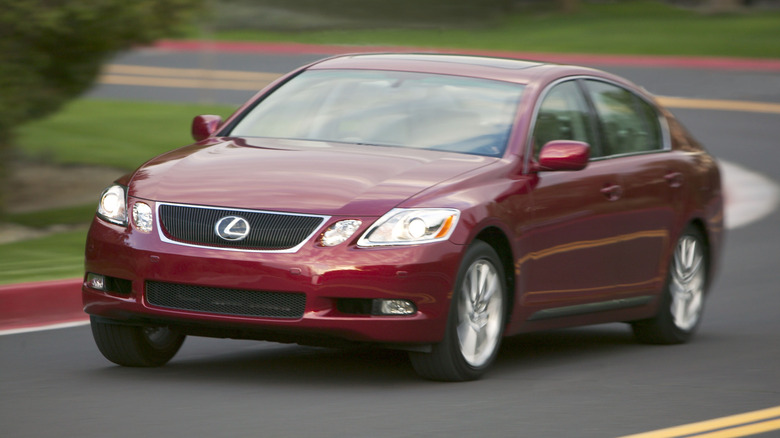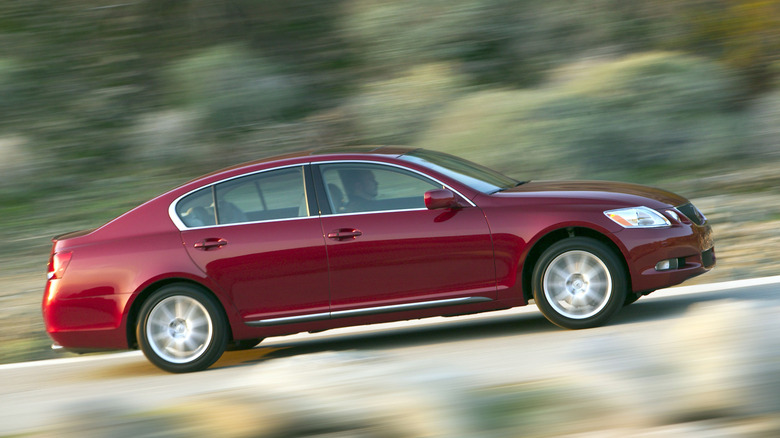Why This Engine Is Considered The Worst Lexus Ever Made
Lexus is a car brand that, generally speaking, has long been associated with excellent reliability. The formula of combining European levels of refinement and luxury backed by the reliability of Toyota mechanicals was a big draw for Lexus in its early years, and the brand's reputation for delivering well-built, long-lasting luxury vehicles continues today. This doesn't mean, however, that every Lexus vehicle or engine has been entirely trouble-free.
Relatively speaking, reliability across the Lexus brand may be great when compared to its luxury car rivals, but as far as the best and worst engines made by major automakers, the title of worst Lexus engine goes to the 3GR-FSE 3.0-liter V6. Why this particular engine? For starters, the 3GR-FSE was plagued with a combination of both safety and reliability issues.
Secondly, there's a more general sense of this engine being obsolete, as it was quickly outgunned by the larger, more powerful Lexus V6 units that came after it. Fortunately, as we are about to see, compared to other Lexus and Toyota engines, the 3GR-FSE was a rare and short-lived engine option, especially in the American market.
Common issues with the 3GR-FSE
We should point out that the 3.0-liter, naturally aspirated and direct-injected 3GR-FSE V6 is less a Lexus engine, and more a Toyota engine. That's because Lexus is a luxury brand owned by Toyota, and not a maker of its own engines. In other markets, the 3GR-FSE was offered in Toyota models like the Crown and Mark X, but in the American market, the only car this engine came in was the 2006 Lexus GS 300. 2006 was the first model year of the fully redesigned third-generation Lexus GS, with the V6-powered GS 300 marking the entry-level model. The 2006 GS 300 made 245 horsepower and 230 pound-feet of torque.
Among issues that have popped up on the 3GR-FSE engine is a faulty fuel pressure sensor that, if unrepaired, could potentially degrade the gasket between the sensor and the fuel pipe and increase the risk of a vehicle fire. This recall also included the smaller but related 2.5-liter 4GR V6 in the Leuxs IS 250.
Even with that issue addressed, in the longer-term view, the 3GR-FSE, like many engines with direct injection, is also prone to carbon build-up, which can lead to oil consumption issues, and in some cases, premature engine failure. Of course, carbon build-up in engines is a more generalized issue with modern direct-injected engines and not a problem limited to this specific car or engine. Still, it is something to consider when looking at the GS 300 as a potential used car purchase.
The one-year wonder
Beyond the potential for engine issues, what further tarnishes the reputation of the 3GR-FSE engine and the 2006 Leuxs GS 300 is that, for the 2007 model year, the GS 300 was replaced by the GS 350 as the entry-level GS model. The GS 350 was powered by the larger, 3.5-liter 2GR-FSE V6, and with the engine upgrade came a large bump in power, up to 303 horsepower.
With little to no trade-off in fuel economy, the GS 350 was an improvement over the GS 300 in every way. It carried over everything people liked about the previous year's model, but with a lot more horsepower.
Naturally, this would make the one-year-only 2006 GS 300 the least desirable of the third-generation GS models, and a car that prospective buyers are usually encouraged to avoid in favor of the GS 350. The 2GR engine in the GS 350, meanwhile, would stick around for more than a decade, all the way until Lexus discontinued the GS from its lineup in 2020.


